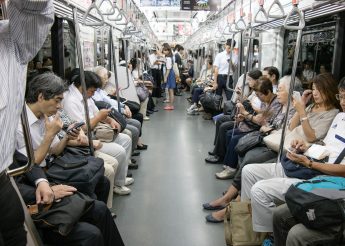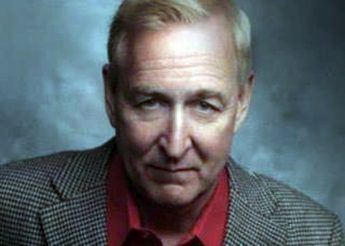Newsroom
News & Press Releases


Cult Leaders’ Executions Trigger Memories of Close Call in Tokyo Subway Gassing
10 Jul 2018H5 Strategies Specialist Media Trainer Hal Foster has published an editorial with Adevarul, the leading daily newspaper and online platform in Romania, on the recent execution of six ringleaders of the 1995 sarin gas attacks on the Tokyo subway system. At the time of the attack, Foster, a former journalist at the Los Angeles Times and other major news organizations in the United States, was an editor of the English-language edition of Japan’s Asahi Shimbun, the world’s second-largest newspaper.
Interested readers can read the Romanian version at this link, and the English version below.
—
Cult Leaders’ Executions Trigger Memories of Close Call in Tokyo Subway Gassing
Hal Foster
The news on July 6 that Japan had executed six ringleaders of the 1995 sarin gas attacks on the Tokyo subway system barely registered with a lot of people.
Not for me. I took one of the subway lines that the Aim Shinrikyo cult attacked a little more than an hour before sarin killed five people and incapacitated dozens on the line. It was a jarring firsthand reminder for me of how close the edge between life and death really is.
I left for work as an editor of the English-language edition of Asahi Shimbun, the world’s second-largest newspaper, at Roppongi Station on the Hibiya Line shortly before 7 a.m. on March 20, 1995. A cult member punctured a container of sarin when the train pulled in to Ebisu Station — two stops before Roppongi — at 7:59 a.m.
The gas killed and maimed as the train continued several more stops, until the conductor realized a tragedy was occurring. The cult chose the Hibiya Line because it connected people to the Kasumigaseki area of Tokyo, the seat of government, which the leaders of Aum Shinrikyo, in their delusions of grandeur, had hoped to overthrow.
Those of us working at Asahi Evening News, whose office was close to Tsukiji Station on the Hibya Line, were stunned at the news that not only had sarin been unleashed on our line, but on two other heavily used lines as well — the Chiyoda and Marunouchi.
We scrambled to call loved ones to make sure they were all right. And we worried that the attacks would extend far beyond the three subway lines, hitting public landmarks and making it dangerous to even walk the streets.
We weren’t the only ones afraid. Millions of people in Tokyo and across Japan wondered what was coming next. It was the kind of fear that would envelop New York City and the United States six years later, in the aftermath of 9/11.
Most of us who had been following Aum Shinrikyo in the news for years were sure the cult was behind the subway attacks. The vast majority of people in Japan, including us, saw Aum Shinrikyo as a dangerous, malevolent apocalyptic movement — like the Peoples Temple that the Rev. Jim Jones headed in the States.
Circumstantial evidence that Aum Shinrikyo was killing people had been piling up for years. Dozens of cult members had disappeared — and were later learned to be dead.
A Yokohama lawyer who was trying to help cult members’ families extricate loved ones from Aum Shinrikyo was tortured and murdered in his home, along with his wife and 1-year-old son.
And nine months before the Tokyo subway attacks, sarin gas sprayed from the trunk of a car killed nine people in Matsumoto, a city where Aum Shinrikyo had built the secret, heavily guarded chemical-weapons plant whose products included sarin. The attack, aimed at killing three judges who were expected to rule against the cult in a land-dispute case, missed its target when the wind shifted away from the apartment complex where the judges lived.
Before the Matsumoto attack, police had been inexplicably unable to convert the voluminous circumstantial evidence against the cult into a case that would stick in court. The beginning of the end for the cult occurred when police, armed with search warrants, stormed Aum Shinrikyo’s Matsumoto compound, where they found chemical weapons and evidence that a number of cult members had been murdered.
They also learned that the cult had considered using a Russian attack helicopter that it had purchased to spray sarin on Parliament and major government administrative offices in downtown Tokyo — an attack that would have killed or incapacitated millions.
The leader of Aum Shinrikyo, a nut case named Shoko Asahara, got a tip in March 1995 from one of the cult’s moles in law enforcement that he and other cult leaders faced eminent arrest in the Matsumoto attacks. Asahara, whom cult members considered a messiah, ordered the subway attacks to precipitate an apocalypse that — he had told his followers — only cult members would survive.
To most of us at Asahi Evening News, it became clear when the Yokohama lawyer was murdered that Aum Shinrikyo was killing people. He was, after all, trying to extricate members from the cult. Along with millions of Japanese, we couldn’t understand why police couldn’t crack such an obvious case — one that was sure to lead to the cult’s undoing.
Something I’ve reflected on a lot since 1995 is that the Aum Shinrikyo attacks foretold the 9/11 attacks less than a decade later. What happened in Tokyo had to have encouraged Osama Bin Laden to try to pull off a mass-casualty attack in the United States.
Altogether, the subway attacks killed 12 people and sickened nearly 6,000 — a casualty toll considerably worse than 9/11. The health problems that sarin victims suffer can be so horrendous that many of the Tokyo subway victims have been in a vegetative state since the attacks, requiring 24/7 care.
I remember walking away from Asahi Evening News to catch a cab home thinking that this might not be the last time that a nutty megalomaniac would unleash a mass-casualty attack on a center of the developed world. I only wish I had been wrong.
As for Shoko Asahara and the other five Aum Shinrikyo leaders who were hanged on July 6, for the deaths, injuries and terror they inflicted on Tokyo for months, my verdict was: Good riddance.
Hal Foster is a former journalist at the Los Angeles Times and other top news organizations in the United States and Japan. He is a specialist media trainer at H5 Strategies.






